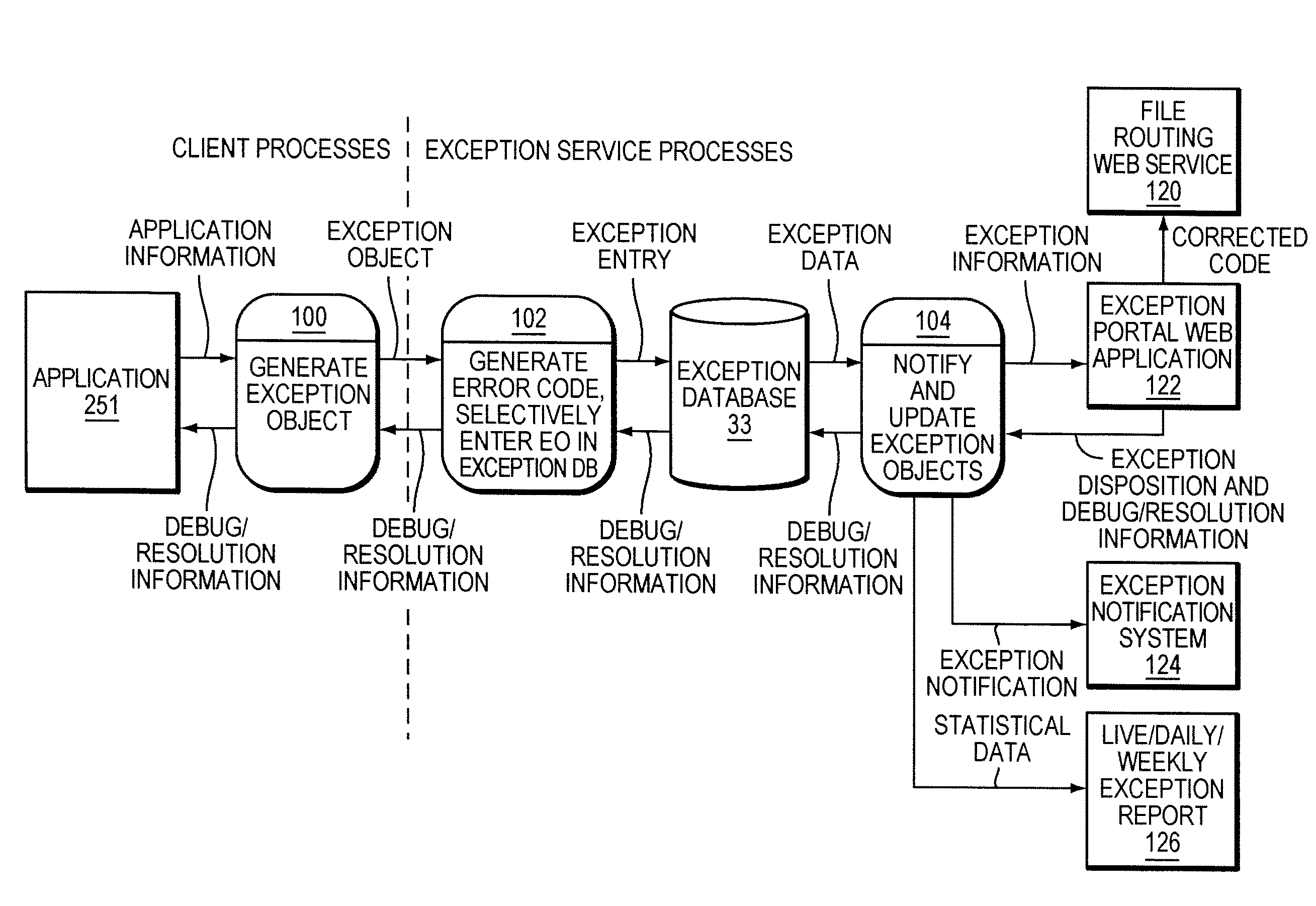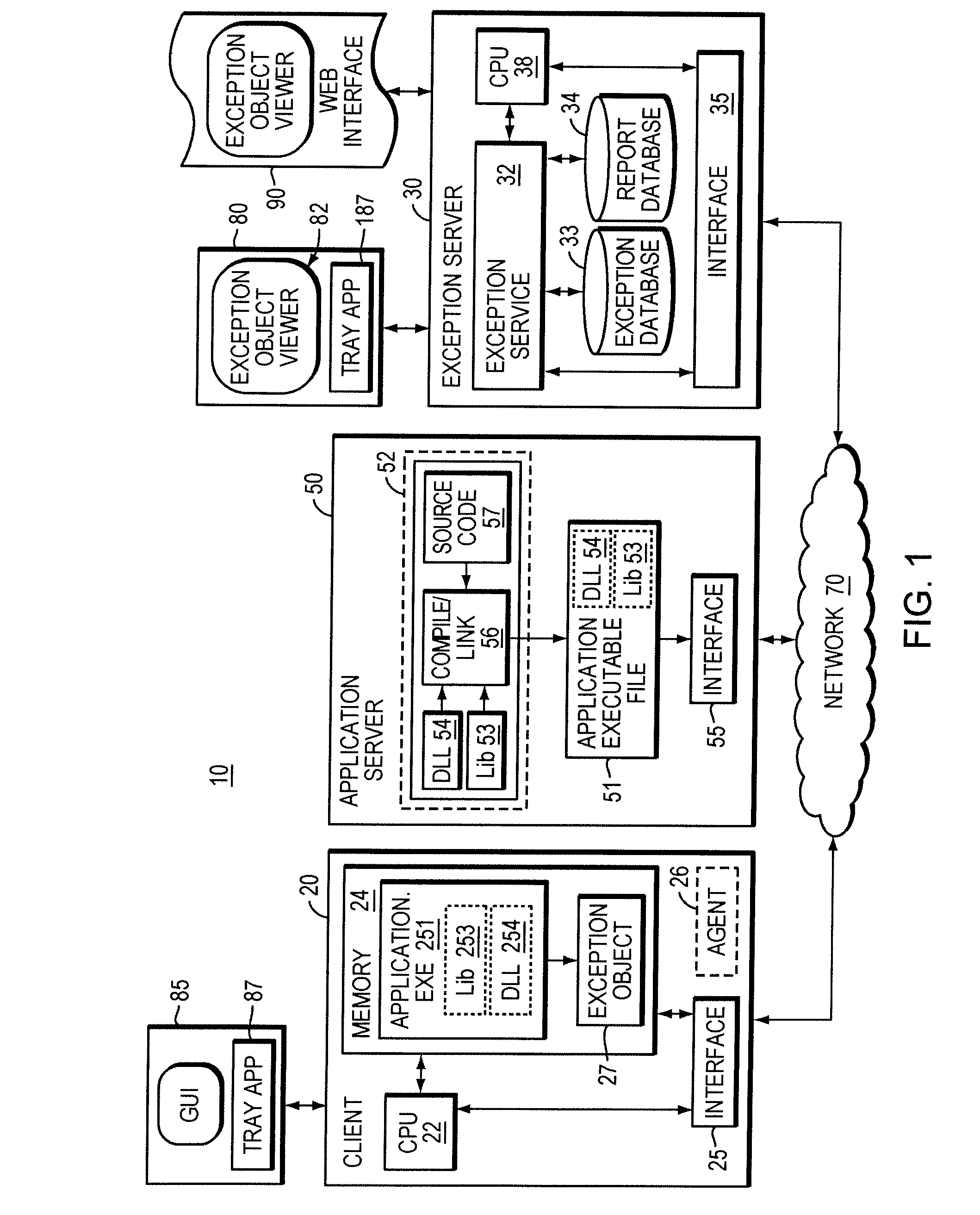Real time automated exception notification and reporting solution
a real-time, automated technology, applied in the software field, can solve problems such as the inability of developers to anticipate every situation in which the application will be used, the inability of users to send error information back, and the inability to report problems
- Summary
- Abstract
- Description
- Claims
- Application Information
AI Technical Summary
Benefits of technology
Problems solved by technology
Method used
Image
Examples
Embodiment Construction
[0020]The present invention comprises an automated exception notification system capable of tracking, notifying and reporting software issues in real time. The system includes a feedback loop which may be used to provide real time resolution, debug, or update information as well as links to training materials to clients.
[0021]FIG. 1 illustrates several components that may be provided in a system of the present invention. Devices including an application server 50, client 20 and Exception Server 30 are each shown coupled via a network 70. Network 70 may be any type and combination of networks, including the Internet, and each of the devices include respective interfaces 25, 55 and 35 which enable the devices to communicate via the network 70. In general the application server is associated with a software developer, the client is a software consumer, and the Exception Server hosts a service of the present invention which facilitates application exception identification and resolution...
PUM
 Login to View More
Login to View More Abstract
Description
Claims
Application Information
 Login to View More
Login to View More - R&D
- Intellectual Property
- Life Sciences
- Materials
- Tech Scout
- Unparalleled Data Quality
- Higher Quality Content
- 60% Fewer Hallucinations
Browse by: Latest US Patents, China's latest patents, Technical Efficacy Thesaurus, Application Domain, Technology Topic, Popular Technical Reports.
© 2025 PatSnap. All rights reserved.Legal|Privacy policy|Modern Slavery Act Transparency Statement|Sitemap|About US| Contact US: help@patsnap.com



